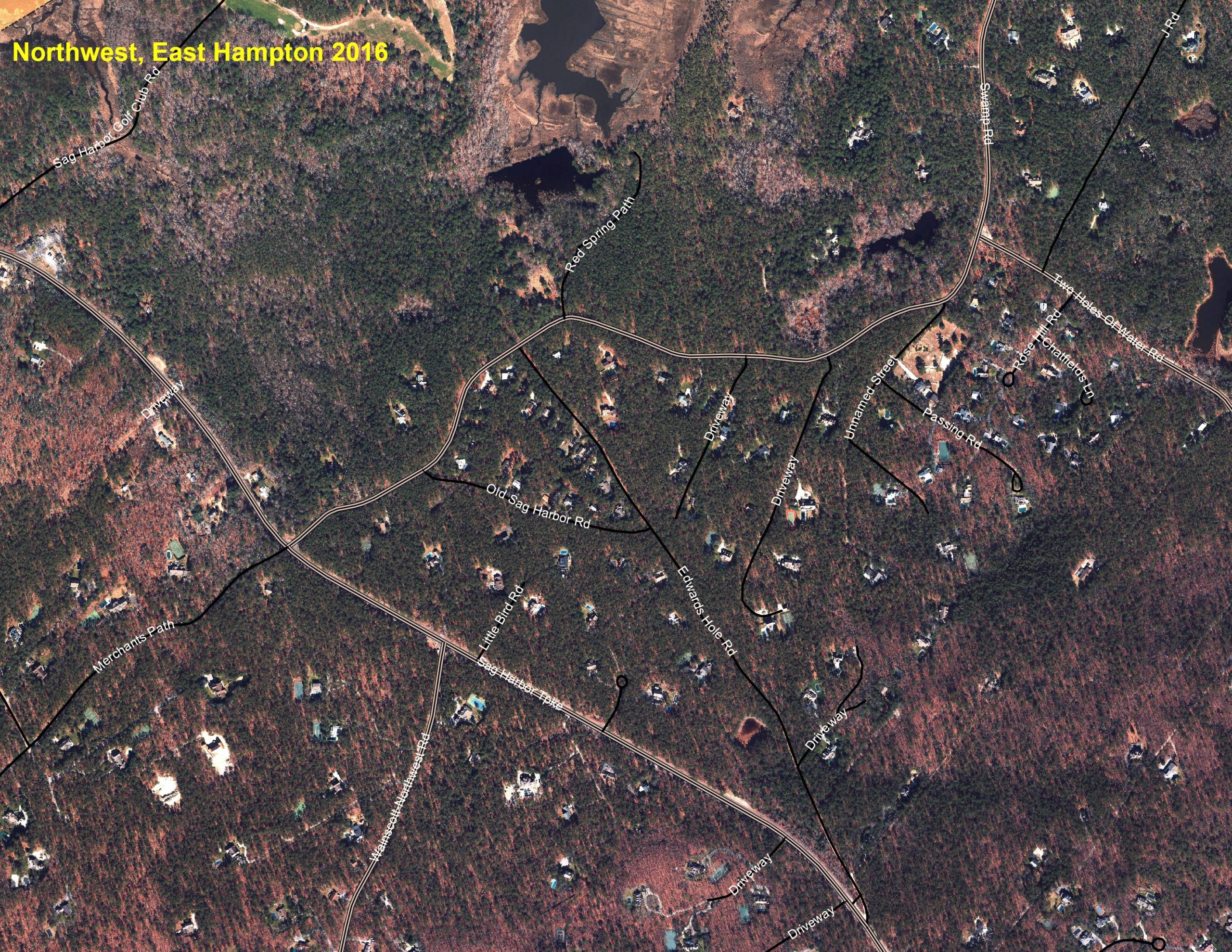
The voracious southern pine beetles have surged again in the woods of East Hampton — and probably across the South Fork — and are likely “here to stay” in the estimation of one town land steward, who spoke at a Town Board work session on Tuesday.
Efforts to stanch the spread of the insects by cutting thousands of infested trees on public and private lands over the last four years does not appear to have been sufficient to halt the bugs — and having hoped to do so may have been unrealistic, they said.
“I naively thought that when we did the state of emergency, that we would eradicate them,” Land Management Coordinator Scott Wilson sighed while discussing the sprawling new infestations this summer. “I thought the winter would be cold enough and if we got enough trees down that the numbers would be small enough that they wouldn’t be able to continue.”
In 2017, the town declared a state of emergency over the infestation of the pine beetles and partnered with the State Department of Environmental Conservation to fell more than 15,000 trees, over two years.
The number of new infestations identified dwindled in 2019, but surged again this year, and is likely far greater than has been identified thus far by town staff since many private lands have not been inspected.
Environmental analyst Andrew Gaites told board members that environmental staff had identified some 2,000 trees in recent days around East Hampton Airport that were infested with the bugs — too many for town staff to cut down themselves — and that they are fielding a steadily increasing number of calls from homeowners asking for inspections of dying trees.
In some instances where small infestations are found and a group of trees can be cut down, it may be possible for homeowners to save other healthy trees, Mr. Gaites said. But in many instances, properties that are surrounded by large undeveloped lands where the bugs have established themselves, the prospects are more grim.
The town has pleaded with homeowners to have their trees inspected — which town staff will do free of charge — and to cut infested trees immediately.
But with increasingly mild winters that do not kill off the bugs, their spread has proven too insidious.
“It appears that this beetle is here to stay,” Mr. Gaites told board members.
The future of combating the infestation of pine beetles — short a clear-cutting of trees on a massive scale — may well now be only be shifting to the planting of tree species that are resistant to infestations or more resilient than the native pitch pines. White pines, Mr. Gaites said, do seem to survive infestations by the beetles better and are commonly used in landscaping of properties, which may bode wells for private lands but leaves vast swaths of woodlands vulnerable.
The town maintains a map of where the infestations have been identified so that homeowners can take a look at the trees on their property and try to identify infestation so that trees can be felled before the bugs inside a given tree emerge and spread to another tree.
“By the time you are seeing brown needles on a tree, most of the beetles have left that tree,” Mr. Gaites said.
“It’s a slow burning fire,” Supervisor Peter Van Scoyoc said.